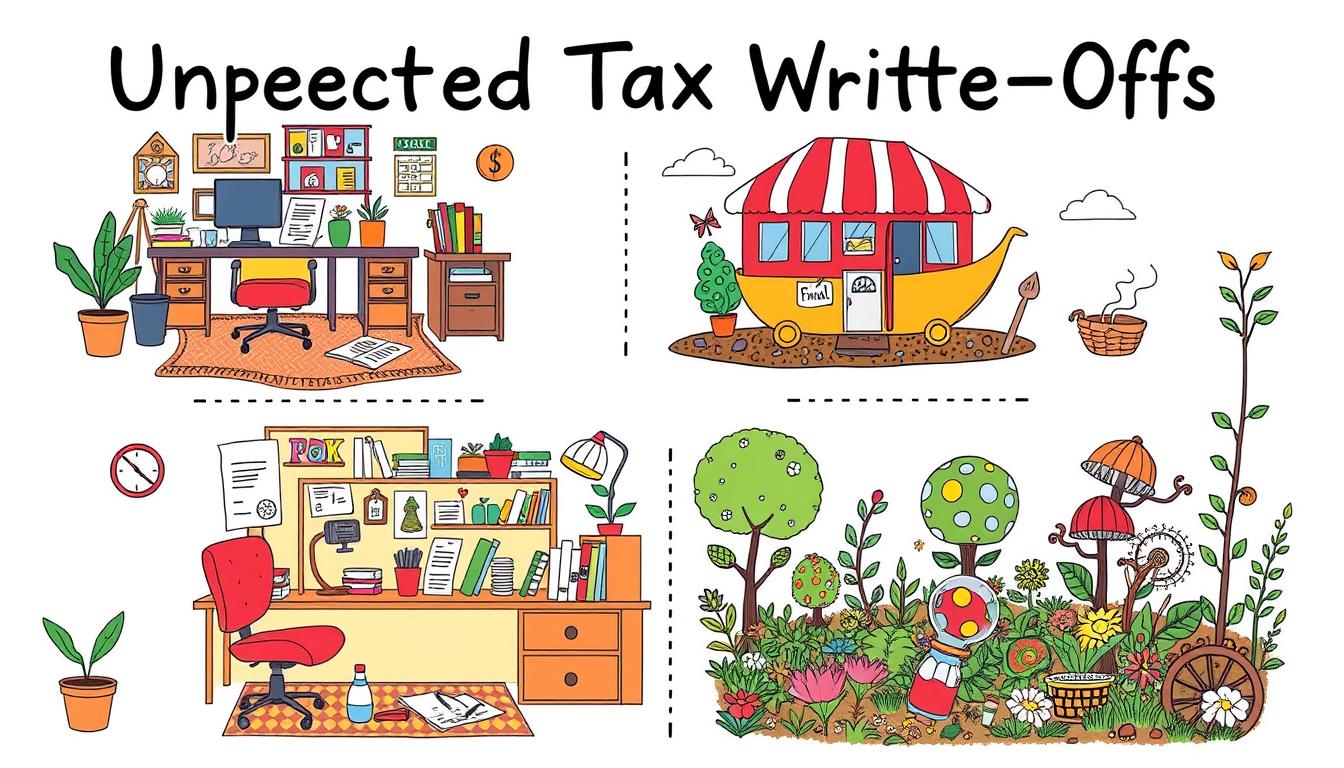To avoid taxes on your Required Minimum Distributions (RMDs), consider several strategies. First, convert your funds to a Roth IRA, which eliminates RMDs entirely. You can also use Qualified Charitable Distributions (QCDs) after age 70½, donating directly from your IRA to charity to lower taxable income. If you're still working past age 73, you might defer RMDs from your employer plan. Finally, explore Qualified Longevity Annuity Contracts (QLACs) to push RMDs until age 85. These options can help you manage your tax exposure effectively while achieving your financial goals, and there's more to explore on this topic.
Key Takeaways
- Utilize Qualified Charitable Distributions (QCDs) to donate directly from your IRA, reducing taxable income and counting towards RMDs.
- Consider converting tax-deferred assets to a Roth IRA to eliminate future RMDs and allow tax-free growth.
- Spread out RMD withdrawals over multiple years to manage your tax bracket and minimize tax liability.
- Invest RMDs in tax-efficient vehicles, such as index funds or municipal bonds, to reduce tax burdens on reinvested income.
- Delay RMDs by continuing employment past age 73 if you own less than 5% of your employer's company.
Strategies for Delaying RMDs

When planning for retirement, you might want to consider several effective strategies to delay Required Minimum Distributions (RMDs) from your retirement accounts. One option is to continue working past age 73. If you're still employed and don't own 5% or more of your company, you can delay RMDs from your current employer's 401(k) plan. Keep in mind, this exemption doesn't apply to IRAs or other accounts, so it's crucial to maintain your job to benefit from this deferment. Additionally, you can explore the benefits of a Bitcoin IRA for tax-efficient growth while you delay these distributions.
Another strategy involves converting tax-deferred assets to a Roth IRA. You'll need to pay taxes on the converted amount upfront, but once it's in a Roth, qualified distributions are tax-free, and there are no RMDs required. RMDs do not apply to Roth IRAs while the account holder is alive, providing further incentive to explore this option.
You can also manage your initial distributions by delaying the first RMD until April 1 of the year after you turn 73. Just be aware that this might lead to two distributions in one year, potentially increasing your tax liability.
Utilizing Qualified Charitable Distributions

One effective way to manage your tax liability while fulfilling RMD requirements is through Qualified Charitable Distributions (QCDs).
To be eligible, you need to be at least 70½ years old, and you can even make QCDs before reaching 73, even if you're not required to take RMDs yet.
Remember, QCDs apply only to traditional IRA owners and can also be made from Roth IRAs. Qualified Charitable Distributions can be initiated at age 70½ and will count towards your RMDs once you turn 73.
Make sure the charity you choose is a qualified organization under IRS rules. You can use the IRS tool to verify their status, and the charity must provide a written receipt acknowledging your donation.
It's important that the distribution goes directly from your IRA to the charity; you can't take the funds yourself first.
You can donate up to $100,000 annually through QCDs, which can count towards your RMD.
The best part? QCDs are excluded from your taxable income, which can lower your adjusted gross income and possibly reduce your tax bracket.
Benefits of Roth IRA Conversions

Considering a Roth IRA conversion can open up new avenues for tax efficiency in your retirement planning. By converting funds from a traditional IRA or 401(k) to a Roth IRA, you can avoid required minimum distributions (RMDs) during your lifetime. This means your funds can continue to grow tax-free without mandatory withdrawals, giving you more flexibility in managing your taxable income. Additionally, many investors seek to diversify their portfolios with precious metals investments to hedge against inflation, which can complement a Roth IRA strategy.
While the amount you convert does get added to your gross income and is subject to ordinary income tax rates, you can strategize to minimize the tax impact. Spreading conversions over several years helps you avoid a significant one-time tax bill and potentially keeps you in a lower tax bracket. Converting during years of lower income can further reduce your tax liability. Additionally, the entire conversion amount is subject to ordinary income tax, so careful planning is essential to manage the tax implications effectively.
Additionally, qualified distributions from your Roth IRA are tax-free if you meet certain conditions. This could protect you from potential future tax increases. Plus, if you plan to retire in a state with no income tax, conversions can be especially beneficial. By considering these factors, you can enhance your retirement strategy and ensure your savings work harder for you.
Managing Taxes With RMDS

Managing your required minimum distributions (RMDs) effectively can significantly reduce your tax burden in retirement. One of the best strategies is to use Qualified Charitable Distributions (QCDs) to satisfy your RMDs with tax-free donations. This not only benefits charities but also lowers your taxable income. Additionally, understanding that RMDs must be calculated separately for each IRA and employer plan can help in strategizing your withdrawals.
If you find yourself in a low-income year, consider withdrawing your RMDs then to keep your tax bracket lower. It's also wise to maximize withholding on RMDs. This helps you manage your tax liability throughout the year. You might want to earmark RMDs to cover any quarterly tax payment shortfalls, especially if you anticipate high capital gains or dividends.
If you're still working for your 401(k) plan sponsor, you can avoid RMDs altogether, which can provide more flexibility. Diversifying your income sources among taxable, tax-deferred, and tax-free accounts is another tactic. Implement tax-efficient withdrawal strategies to maintain a lower tax bracket.
Regularly evaluate your entire tax situation and consult a financial advisor for personalized advice. By planning holistically, you can adjust your withholding and estimated payments to avoid penalties and optimize your overall tax situation.
Exploring Qualified Longevity Annuity Contracts

If you're looking for ways to optimize your retirement income while potentially reducing your tax burden, exploring Qualified Longevity Annuity Contracts (QLACs) might be a smart move. Funded through qualified retirement plans like 401(k)s or IRAs, QLACs allow you to contribute up to $200,000, helping you defer required minimum distributions (RMDs) until age 85. This delay can lower your overall retirement account balance, resulting in reduced RMDs and possibly placing you in a lower tax bracket. In states like Washington, where there is no income tax on IRA withdrawals, this strategy can significantly enhance your financial situation.
When you purchase a QLAC, the funds used for it are excluded from your retirement account balance, helping to minimize taxable earnings and potentially lowering your Medicare premiums. Additionally, the maximum purchase limit for QLACs is set at $200,000 for qualified retirement plan owners, providing a significant opportunity for tax deferment.
While payments from a QLAC are subject to income tax when received, you can customize the contract to fit your needs, including options for joint life payouts or inflation adjustments. With a QLAC, you gain the security of guaranteed income for life, protecting your savings from market fluctuations. This predictability allows you to invest or spend other retirement funds more aggressively, enhancing your overall financial stability in retirement.
General RMD Planning Tips

Navigating Required Minimum Distributions (RMDs) can feel overwhelming, but with the right strategies, you can effectively manage your tax liability.
One smart approach is to use your RMDs for year-end estimated tax payments. This allows you to time your payments strategically, deferring some of them while still earning investment income. You can split your RMD payment between tax obligations and the remaining amount, gaining a time value of money benefit. Additionally, it's important to remember that RMDs are mandatory withdrawals required for retirees regardless of necessity for living expenses.
Another beneficial strategy is making Qualified Charitable Distributions (QCDs). By donating your RMDs directly to charity, you won't pay taxes on that amount, which can help you stay in a lower tax bracket and save on both federal and state taxes.
Consider converting your traditional IRA to a Roth IRA. This move reduces your future RMDs, as Roth IRAs are exempt from them and grow tax-free. You can spread conversions over several years for better tax efficiency, especially if you anticipate higher tax rates in the future.
Finally, ensure you accurately calculate your RMDs and plan ahead. Using the correct IRS tables can help minimize your distribution amount, keeping your tax exposure in check.
Reinvesting RMDs Effectively

Reinvesting your Required Minimum Distributions (RMDs) can be a savvy way to keep your money working for you, even if you can't shield it from taxes like you'd in a retirement account. You can reinvest RMDs in a taxable brokerage account, allowing for continued earnings.
While you won't have the tax advantages of an IRA, you can manage investment taxes, including capital gains, dividends, and interest. Consider using index funds or ETFs, which typically have lower turnover, helping minimize tax liabilities. Tax-loss harvesting can also be a useful strategy to offset gains. If you're in a high tax bracket, tax-free municipal bonds might be a great option for your RMDs. Additionally, you might explore options like a Gold IRA that could provide a hedge against inflation on your reinvestments.
Another strategy involves using RMDs to pay taxes on Roth conversions from other retirement accounts. This can reduce your future tax bills by converting pre-tax money to tax-free Roth accounts. RMDs cannot be reinvested into another retirement account, but using them wisely can still lead to significant tax savings.
Lastly, consider redirecting your RMDs towards other tax-advantaged uses, like 529 education plans or Qualified Charitable Distributions to reduce your taxable income.
Frequently Asked Questions
Can I Avoid RMDS Entirely if I Never Retire?
If you never retire, you might be able to delay RMDs by continuing to work for your current employer, provided you don't own more than 5% of the company.
However, RMDs from older retirement accounts, like previous 401(k)s or IRAs, can't be avoided.
Converting to a Roth IRA eliminates RMDs altogether, but remember, that's a taxable event.
Evaluating your options can help you manage your retirement funds effectively.
How Do RMDS Affect My Medicare Premiums?
RMDs can significantly impact your Medicare premiums.
When you take distributions, they're added to your modified adjusted gross income (MAGI), which determines your premium rates. If your MAGI pushes you over certain thresholds, you might face higher premiums due to the IRMAA surcharge.
This can result in increased costs for both Part B and Part D, potentially adding thousands to your annual healthcare expenses.
Keeping an eye on your income can help manage these effects.
Are There Penalties for Not Taking RMDS?
Yes, there are penalties for not taking your Required Minimum Distributions (RMDs).
If you fail to withdraw the necessary amount, you could face a 25% excise tax on the amount not taken. This penalty can be reduced to 10% if you take the RMD by the end of the second year following the due date.
It's crucial to report any missed RMDs using Form 5329 when you file your tax return.
Can I Roll Over RMDS Into Another Retirement Account?
No, you can't roll over RMDs into another retirement account. RMDs are considered distributions, and they must be taken before any rollover occurs.
If you mistakenly roll over an RMD, it'll be treated as an excess contribution, leading to a 6% penalty unless corrected.
To avoid complications, make sure you take your RMD first before proceeding with any rollover of the remaining assets.
Always keep the IRS rules in mind!
What Happens to RMDS if I Pass Away?
If you pass away, your beneficiaries must fulfill any remaining Required Minimum Distributions (RMDs) from your retirement accounts.
They'll need to submit the necessary paperwork, including a death certificate, to the account custodian.
The full RMD amount must be satisfied regardless of when you die, and missing the deadline can lead to significant penalties.
It's crucial for your beneficiaries to understand these rules to avoid unnecessary tax burdens.
Conclusion
By using these strategies, you can effectively manage your required minimum distributions and minimize your tax burden. Consider delaying RMDs, utilizing qualified charitable distributions, or converting to a Roth IRA to enhance your tax efficiency. Additionally, exploring longevity annuities and reinvesting your RMDs can further aid your financial planning. Remember, proactive tax planning is key to making the most of your retirement funds and preserving your wealth for the future.









